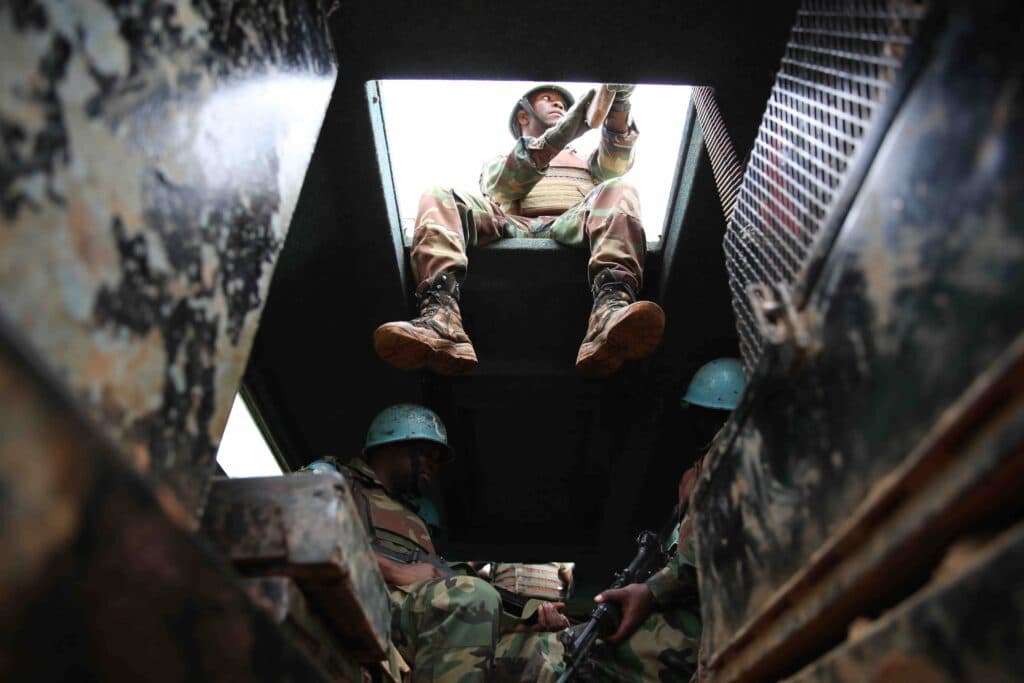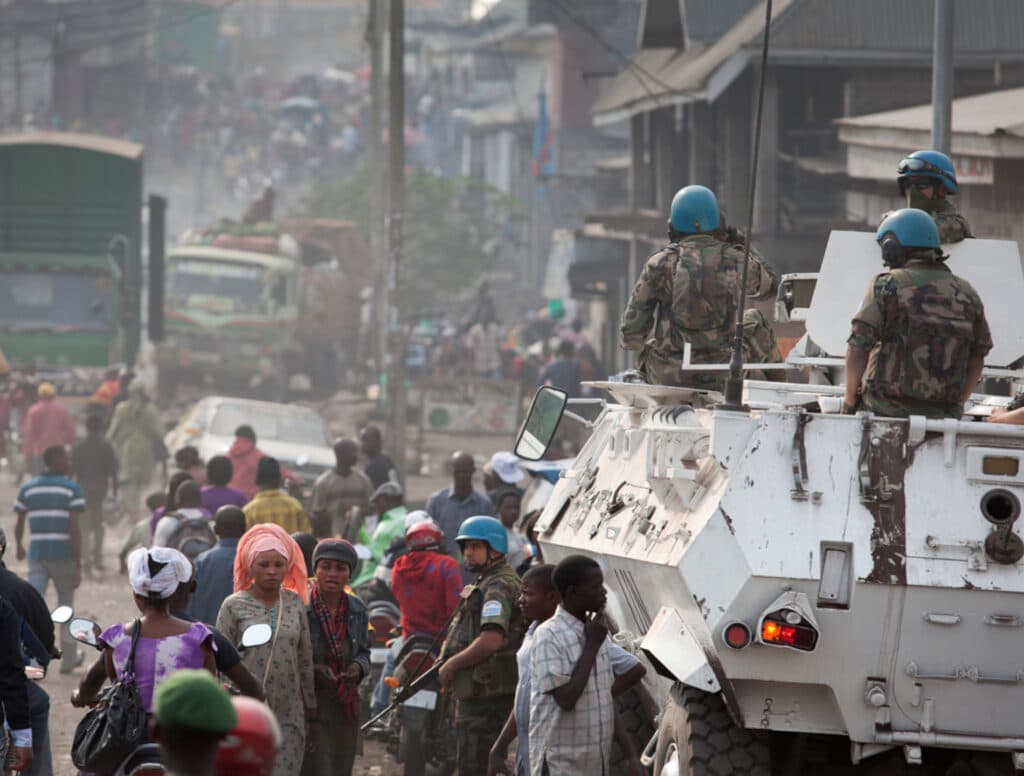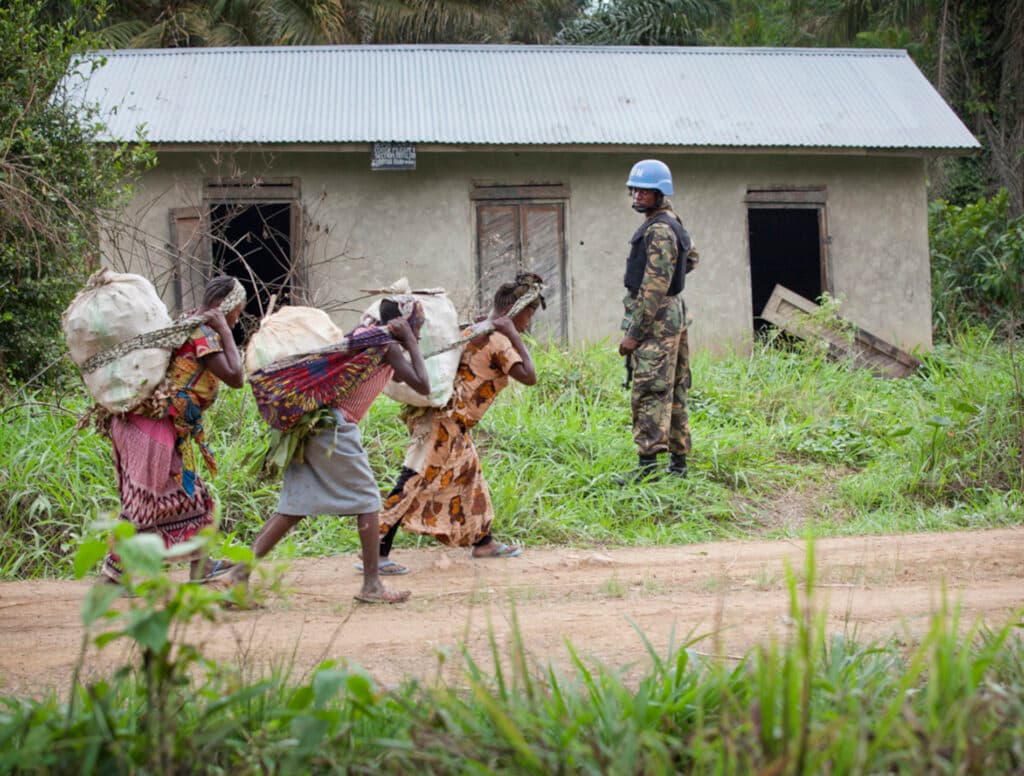
The principle of precautions in attack
The obligations of attackers and defenders prior to an attack.
A central notion under international humanitarian law is the principle of precautions in attack: parties to a conflict must take steps to minimise civilian harm.
During hostilities the parties to an armed conflict are obliged to respect the rule on precautions in attack. This rule supplements the general obligation to distinguish, at all times, between civilians and combatants, and between civilian and military objectives. It interlinks with rules on proportionality.
Rules relating to precaution are intended to guarantee that the parties will never disregard the presence of civilians and are obligated to take steps to minimise the harm caused to civilians.
The obligation to take precautionary measures to protect civilians is placed on both the attacker and the defender. For instance, the attacker needs to take the presence of civilians prior to any attack into account and make adjustments to its strategy as necessary and feasible.
The leadership of the attacked community, on the other hand, needs to take feasible steps to minimise the anticipated harm towards its own civilian population, most notably by not situating military objects close to civilian objects.
These general principles are rooted in the following legal provisions, which state that whenever civilians are present, parties to an armed conflict must:
- take precautions during military operations to spare the civilian population and civilian objects (Article 57 of Additional Protocol One);
- take precautions to protect the civilian population and civilian objects under their own control against the effects of military attacks (Article 58 Additional Protocol One).
These central obligations to take precautionary measures are clearly established under Rule 15 of the ICRC study on customary international law.
Specific measures of precaution to be taken during armed conflict
International humanitarian law (IHL) outlines a set of precautionary measures that the parties are obliged to take during armed conflict.
Location of military objects: Whenever a party is involved in an armed conflict it has a responsibility, as much as possible, to separate military objectives from the civilian population located under its own control. The party should, for example, avoid locating military objectives near densely populated areas. It should also, as much as possible, remove civilians and civilian objects from the areas of military objectives.
Choosing weapons and methods of warfare: Parties to the conflict must verify that targets are indeed military targets. When several targets serve the same military purpose, the attacker should choose the target which is expected to cause the least danger to civilians and their property.
Military operations must be cancelled or suspended if it turns out during combat that the target is not a military target or that the expected harm to civilians is excessive in relation to the expected military advantage.
Close attention should be given to the verification of the targets and the causalities during the fighting. The parties to the conflict cannot rely exclusively on previous estimations regarding possible harm to civilians, but must also take into account any changes of circumstances on the ground. Information about the existence of civilians is always relevant and should be confirmed and processed as part of the relevant military considerations prior to every attack.
Warnings: The parties to armed conflict must, as much as possible, give effective warnings before an attack. Warnings increase the opportunities for civilians to protect themselves from any possible harm caused by attacks. However, warnings cannot be misused as justification to target civilians who chose to stay in the battlefield for any reason. The effectiveness of the warning is crucial for the legality of military operations. The attacker who provides the warning bears the burden of proof that the method used to distribute and disseminate the warnings was indeed effective.
If hospitals are being used for military operations, warring parties must give an effective warning of impending attacks.



